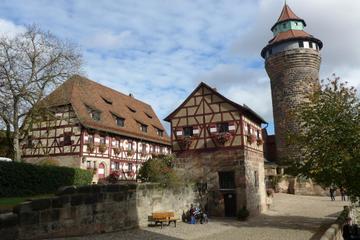Nuremberg Castle (Kaiserburg)
TIME : 2016/2/22 11:06:27

Nuremberg Castle (Kaiserburg)
Towering over the Altstadt (Old Town) north of the River Pegnitz, Nuremberg Castle was once the most important in Germany, as it was the seat of the Holy Roman Emperors who virtually ruled over Europe for hundreds of years from medieval times. Begun in 1120, the castle has been extended, abandoned, remodeled and blown to pieces over the centuries before being completely restored to its original Romanesque and Gothic grandeur following Allied bombing in World War II.
The castle complex straddles the top of a low hill and resembles a small city behind its fortified walls, comprising several separate half-timbered palaces, towers, stables, chapels, underground cellars and courtyards all built of mellow sandstone and topped with red brick tiles. Of these, the Romanesque chapel and Imperial Apartments should be visited first as they are ornately decorated and contain a permanent exhibition on the Holy Roman Empire. Other structures open to the public include the Sinwell Tower (Sinwellturm), which has a viewing platform for fine city panoramas, and the Bower, where the Kaiserburg Museum showcases the castle’s eventful history and displays an arsenal of weaponry and armor; this is an offshoot of the German National Museum (Germanisches Nationalmuseum).
The gardens that fan out in front of the Kaiserburg were originally created in the 15th century; much replanted, today they are laid out in formal parterres amid smartly clipped maple trees.
Practical Info
Located at Auf der Burg 13, the castle is open daily. From April to September, its hours are 9am to 6pm, while in October through March it is open from 10am to 4pm. Admission varies, but basic entrance charges are €7 for adults. Take the tram to Tiergärtnertor or U-bahn Line 1 to Lorenzkirche. Please note that not all of the castle is wheelchair accessible.
